Guns "Hyacinth-B" on the defense of Donbass
A significant contribution to the forceful demilitarization of Ukraine is made by artillery units and subunits of the Russian army and the militia of Donbass. They are armed with systems of different classes and types, and all of them are used. In particular, towed guns 2A36 "Hyacinth-B" are being deployed to firing positions. These 152-mm guns allow you to attack and effectively hit a variety of targets at a distance of tens of kilometers.
"Hyacinth" in battle
The towed gun "Hyacinth-B" is among the weapons available to all participants in the current conflict. Guns of Soviet design and production in various quantities are available to the ground forces of Russia, the people's militias of the republics of Donbass and the Ukrainian army. At one time, it was Ukraine that "helped" the two self-proclaimed states to obtain artillery. Almost the same is the case with the self-propelled gun 2S5 "Hyacinth-S".
The Ukrainian side has been using its Hyacinths since 2014, almost from the very beginning of the civil war. Shelling of the cities of Donbass from such guns was carried out on a regular basis, incl. in violation of signed agreements. Shortly before the start of the Russian Special Operation, the activity of Ukrainian artillery increased again. However, soon the Russian army began to stop such activities by force.
A certain number of Ukrainian "Hyacinth-B" at one time became the trophies of the Donetsk and Luhansk militias. These weapons immediately began to be used against the former owners. It is still used today - along with other guns and howitzers, 2A36 products are used to liberate the occupied territories. Recently, the press service of the People's Militia of the DPR showed an episode of the combat work of the Hyacinths and their crews in the area of the settlement. Makeevka.
An interesting video was published on the resources of the NM DPR on May 15. It shows how the crew of the towed "Hyacinth" went to a given position, deployed the gun and prepared to fire. From reconnaissance, he received the coordinates of an area target in the form of a cluster of enemy equipment and manpower. The gunners performed the necessary calculations and fired a series of shots.
The control of the results of the shooting was carried out by a reconnaissance UAV. He filmed the moments of hitting and undermining the shells. Also in the frame were the burning ruins of buildings used by the enemy as shelters.
The Russian army also has similar weapons, but its use has not yet been reported. Probably, the role of 152-mm howitzer artillery in the Special Operation is completely assigned to the towed and self-propelled products "Msta-B/S". In addition, the 203 mm caliber systems are used. These weapons are available in sufficient quantities, and, probably, therefore, it is possible to do without the involvement of 2A36 products.
Features and capabilities
The towed gun 2A36 "Hyacinth-B" was developed in the first half of the seventies at the Special Design Bureau of the Perm Machine-Building Plant. Lenin (now Motovilikha Plants). In 1975-76. the gun successfully coped with the tests, was put into service and entered the series. The release of such systems continued until the end of the eighties. In parallel, work was carried out on the self-propelled gun "Hyacinth-S".
The Hyacinth-B gun is a towed gun of traditional architecture. It is capable of firing direct fire or from concealed positions in order to destroy manpower, equipment and structures on the march or in places of concentration. The gun is large in size, its length in the stowed position is 12,9 m. Weight is 9,76 tons, which places high demands on the tractor. The calculation of the gun includes 8 people.
Product 2A36 is built on the basis of a rifled barrel of 152 mm caliber, approx. 50 klb. The barrel is equipped with a developed muzzle brake. The breech accommodates a semi-automatic shutter with a horizontal wedge. The gun uses a separate-sleeve loading principle. A chain mechanism is provided for sending, allowing you to perform up to 5-6 rds / min. The barrel is mounted on advanced hydropneumatic recoil devices.
Specially for the "Hyacinth-B" a reinforced carriage was developed, corresponding to the mass of the gun and the loads during firing. The design of the upper machine provides horizontal aiming within 25 ° to the right and left from the central position. Vertical guidance - from -2,5 ° to + 57 °.
The lower machine is equipped with a two-axle wheel drive; in preparation for firing, the wheels rise above the ground. Between them, under the carriage, there is a lowered pallet-support with a hydraulic jack. There are traditional sliding beds with developed coulters and a towing device.
Aiming is carried out using an optical sight OP-4M-90A or artillery panorama PG-1M. Guidance drives are manual. In the Russian 2A36M modernization project, the standard gun devices were supplemented with modern satellite navigation systems and a computer. The presence of this equipment speeds up the binding on the ground, the calculation of data for firing and preparation for the shot.
For the 2A36 gun, an own line of separate-shell shots was created with shells for various purposes and a variable charge. The main ammunition is a high-explosive fragmentation projectile 3OF29 weighing 46 kg with 6,7 kg of explosive. When fully charged, the projectile flies 28,5 km. The 3OF59 active-rocket projectile has a range of 33,5 km. It is possible to use the Krasnopol guided projectile. Smoke, cluster and even nuclear shells were also developed.
Potential and danger
In terms of the combination of performance characteristics, the 2A36 Giacint-B gun, like its self-propelled version 2C5, is one of the most powerful guns of late Soviet development. So, in terms of firing range and the power of ammunition, it surpasses all samples of its own and previous times, yielding only to the 203-mm 2S7 Pion gun.
The large size and weight of the gun, as well as the large and heavy single-shell shot, to some extent make it difficult to move, deploy and combat use. However, this is considered an acceptable price to pay for high fire performance.
In general, "Hyacinth-B" and its ammunition have a high potential. At the same time, the full use of all possibilities depends on auxiliary means - intelligence, control and adjustment. At present, there are all the necessary tools of this kind, allowing you to get the best possible results.
The Russian army and the militias of the republics use various types of UAVs for searching for targets and / or additional reconnaissance. Batteries and gun crews receive target designation via existing communication lines, after which they fire. Fire adjustment is carried out by the same UAVs. The constructed communication loops make it possible to significantly speed up the exchange of data, which increases the efficiency of fire and reduces risks.
It should be taken into account that the Ukrainian artillery uses similar principles of work, incl. for the effective use of 2A36 guns. This fact is taken into account by our troops, and the necessary measures are being taken. The Russian and Republican armies are trying to track down and shoot down enemy Drones, as well as suppress communication channels. In addition, the means and methods of counter-battery combat are used - any enemy “Hyacinth-B” detected, like other guns, is subjected to prompt demilitarization.
Artillery confrontation
Despite its considerable age, the 2A36 "Hyacinth-B" towed gun is still effective and dangerous. weapons. The characteristics of the gun itself and its ammunition are at a high level and allow solving all the assigned tasks. The introduction and use of additional means makes it possible to increase specific parameters and improve the results of combat work in general.
The high potential of the Hyacinths is currently being used by the NM of the DPR to protect their republic and in order to help in the demilitarization of Ukraine. At the same time, a certain number of guns remain in service in the Ukrainian army and pose a threat to the Donbass and the Russian army. However, the results of such a confrontation of the same type of artillery are quite predictable. Ukrainian guns are waiting for the destruction or transformation into a trophy of the advancing troops.
- Ryabov Kirill
- UNM DPR, "Izvestia"
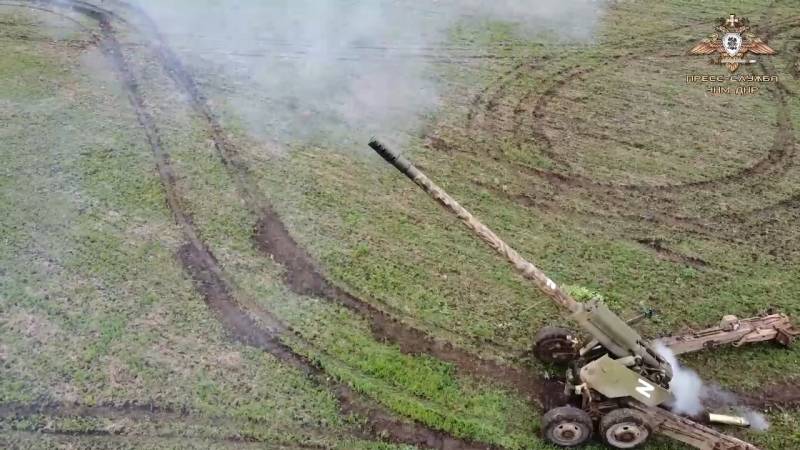
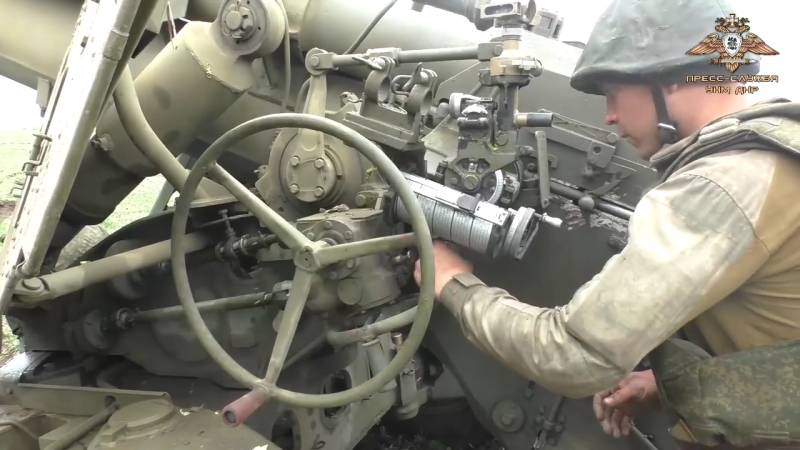
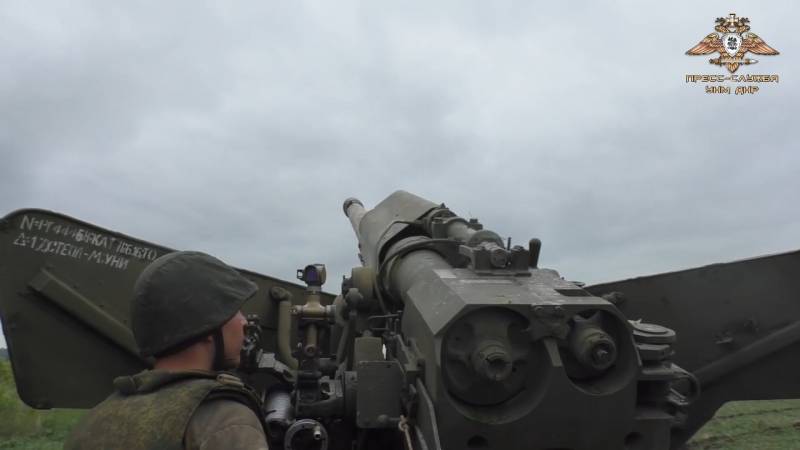
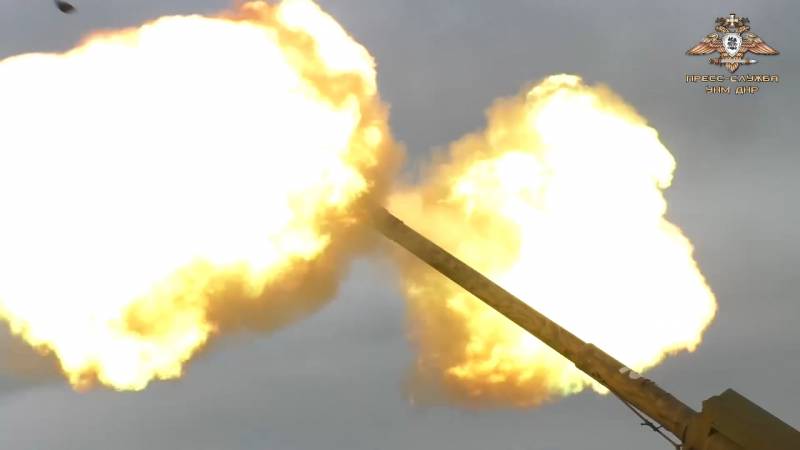
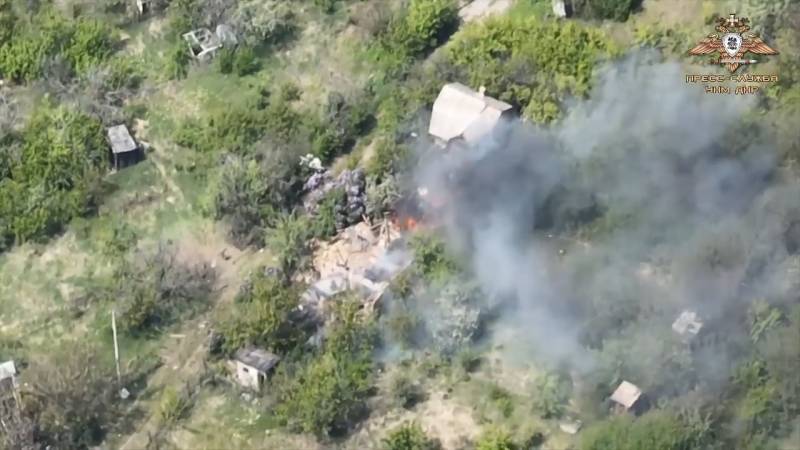
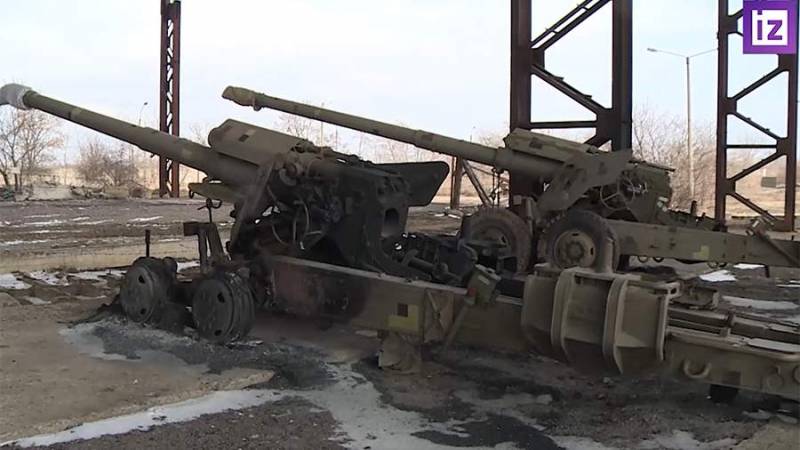
Information